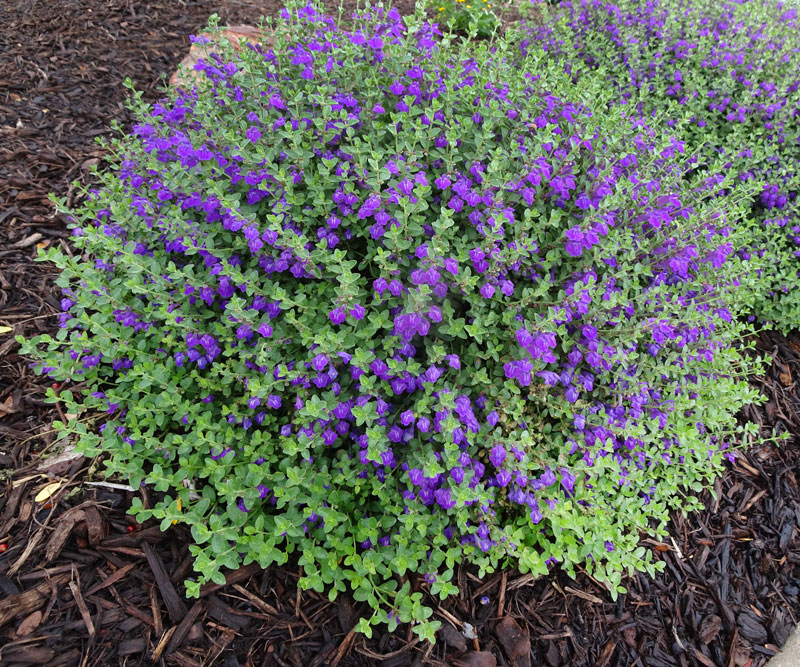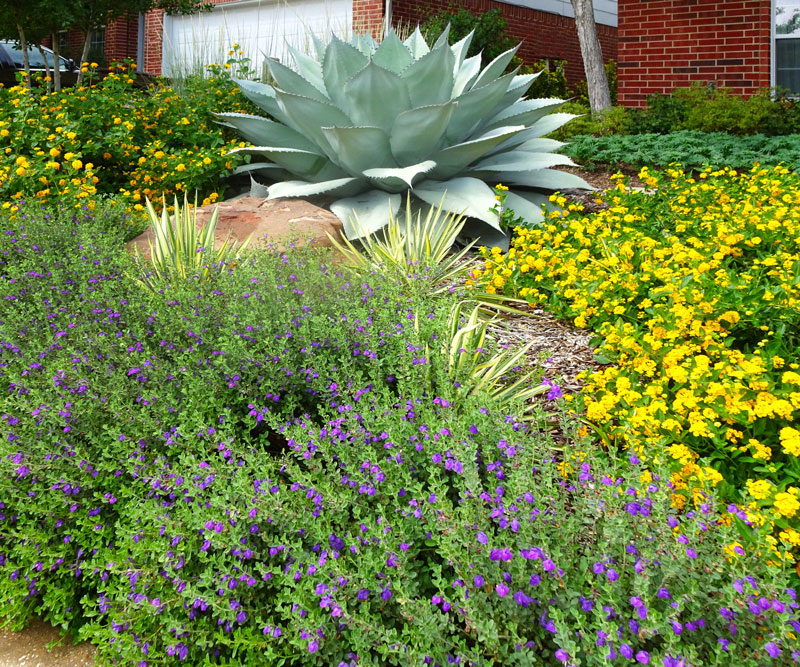Try this fine little perennial – By Steve Huddleston

I have a new plant in my list of favorite perennials. It’s ‘Dark Violet’ skullcap, a tidy little perennial that’s attractive and essentially bulletproof in the Texas summer landscape.
It blooms for months on end with small flowers that are, as the name suggests, dark purple. Standing atop velvety gray-green leaves it puts on quite a show as it blooms all summer and well into fall.

Here are the particulars…
Common name: ‘Dark Violet’ skullcap, referring to the flowers’ resemblance to military helmets of the Middle Ages.
Scientific name: Scutellaria x ‘Dark Violet.’ It’s a cross between S. suffrutescens (pink skullcap) and S. resinosa ‘Smoky Hills.’
Native homes of parents: Northeastern Mexico and Smoky Hills of Kansas
Family: Lamiaceae (Mint family)
Hardiness: USDA Plant Hardiness Zones 5-8
Mature size: 6-8 in. tall and 10-15 in. wide.
Sun or shade: Full sun or nearly full sun. Handles reflected heat well, so good along retaining walls, river rocks, and patio surfaces.

Leaf characteristics: Oval 1/4-in. long, velvety and grayish green. Evergreen or semi-evergreen depending on where you are and how cold it gets.
Flower characteristics: Snapdragon-like blooms along spikes. Dark purple. Individual flowers are only 1/2-in. in size, but when masses of flowers are present at the same time, the effect is stunning.
Pollinator plant? Yes. Attracts bees, butterflies, and hummingbirds.
Annual/perennial: Perennial except in extremely cold areas. Trim into tight globes if top growth freezes.
Soil preferences: Sandy or shallow rocky soils that drain perfectly. Tolerates drought but keep moist until well established.
Combines well with: Yellow, orange, and pink-flowering plants, brightly variegated foliage. Good in patio pots and beds.
